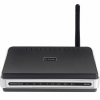Before you act like Admiral Farragut at Mobile Bay and go all "...full speed ahead," the smart move is to ask your technically inclined family members or friends first. But who do you ask when the children and grandchildren have finally gone home and it's time to figure out what software you want to add - or add back onto your new computer?
Windows Software Best Avoided
http://lifehacker.com/384545/superior-alternatives-to-crappy-windows-software (Published: 8/30/11)
It just so happens that Lifehacker.com has already asked and answered that question with a 17 item list of Windows software to avoid if possible. Those of us born when secretaries made multiple copies with a typewriter and carbon paper instead of a Xerox machine may prefer a more gentile title, but the title of LIfehacker's answer is both accurate and justified.
Some of the software listed is hard to avoid. You may already have a large folder of QuickTime movies of the kids (or grandkids), or your business uses Microsoft Office and you're trapped into using MS Outlook by shared calendars. I understand all of that. But like it or not, the software listed in the Lifehacker article has a substantial number of people who would rather use something else if they could. Most of the time there are alternatives. The article suggests other possible choices to the commonly avoided programs IF you're not already entangled and wish to try some something that might even be better.
Once you have some insight about what to avoid, Lifehacker then has two more articles to help new or replacement computer owners download what the authors and many others consider better or even the best software alternatives for Windows computers.
Best Windows Software
http://lifehacker.com/5826909/lifehacker-pack-for-windows-our-list-of-the-best-windows-downloads (Published: 8/2/11)
 Right away, in the second paragraph, readers have the option of downloading and installing the entire list of best Windows software in one click from Ninite.com. Ninite is considered one of the more ethical sites by some security-minded developers, but I'd still recommend you look at each piece of software listed and pick those you wish to try first. At the same time, I'd also recommend that you bookmark all three of the best and best avoided Windows software articles so that you can come back and download other applications if you later discover you need them.
Right away, in the second paragraph, readers have the option of downloading and installing the entire list of best Windows software in one click from Ninite.com. Ninite is considered one of the more ethical sites by some security-minded developers, but I'd still recommend you look at each piece of software listed and pick those you wish to try first. At the same time, I'd also recommend that you bookmark all three of the best and best avoided Windows software articles so that you can come back and download other applications if you later discover you need them. Even a casual reader will quickly discover that a few software applications are listed in the software to avoid AND the best Windows downloads. Adobe Flash, Adobe Reader and Skype are on both lists. First of all, some basic software is hard (or irritating) to avoid. At least, the best windows downloads list links you directly to the developer's website and not to a 3rd party site that's larding up the download with toolbars you didn't ask for when you started and may even be difficult to remove. (See the Dec. 6 blog post "CNET's Download.com may download more than expected...")
Most Popular Windows Software
http://lifehacker.com/5867878/most-popular-windows-downloads-and-posts-of-2011 (Published: 12/13/11)
As the title says, this is a collection of the most popular software downloads and short articles or "how-to's" to help new or returning users avoid annoyances, learn new tricks or accomplish tasks that have been difficult using other software solutions. For example, the list includes two hints for Firefox version 4. I'm already using Firefox 8 and will update to version 9 soon, but annoyances can carry forward and several are easily corrected. For example, my Firefox 8 looks very similar to my old Firefox 3. I like my tabs just above the page I'm viewing. The point is that you can sometimes customize software to work the way you want it to work.
And finally, don't forget the Windows Security Baseline so that your new or existing computer stays as secure as possible in the shark and minefield infested waters of the Internet. (See: the Dec. 1 blog post "Getting a new Computer for Christmas?") And don't forget to use the automated software update programs to help keep your protected computer that way.
If you're wondering about all the nautical references to admirals, sharks and minefields, in my youth, I always felt more secure without the additional complication of staying afloat and I joined the infantry. I hope you and your computer stay safe and secure without any added complications during the New Year and that you enjoy your holidays...





